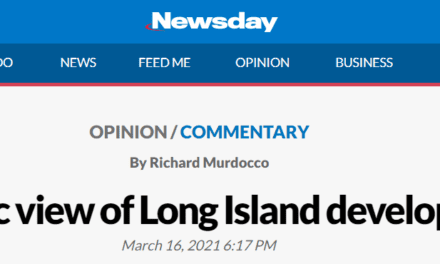As seen on Three Village Patch on October 21st, 2010
When President Stanley came into his leadership position at Stony Brook University, he decided to jump head first into the fight to build a hotel on campus. The battle for an on-campus hotel has been raging since 1986, with an amended proposal in 1989 and eventual stagnation by 1994. Late last year, the battle was resurrected once again. The current proposal places the hotel adjacent to the Ashley Schiff Preserve near the main entrance to the campus. While the legal battle is over lease agreements and the public/private relationship, the more important planning implications of this project should take precedence in the project’s discussion.
Stony Brook University’s growth should be encouraged, and it would be ridiculous to deny them the right to expand. Their 640 acre campus houses over 30,000 people, and contributes roughly $4 billion to the economy. Those figures are staggering, especially considering the opposition the university receives from the surrounding communities over every move it makes. However, when it comes to the hotel, the university has made poor decisions and the plan’s opponents are actually making sense.
The proposal has always been severely flawed, from its original form through its current incarnation. Furthermore, the university has been needlessly stubborn in considering alternatives. The hotel itself is not necessarily the problem, but its location is a very poor choice for the area. The university’s administration claims that the hotel site can be for visitors of the hospital, but the proposed hotel site is almost a mile away, with the need to cross Nicholls Road to even access the hospital. The main entrance to the university faces Nicholls Road, a route that serves as a primary north/south highway for not only the Setauket/Stony Brook area, but all of Suffolk County. Nicholls does not have any commercial frontage, nor should it. Its primary purpose is not for local stops but express service in each direction. A hotel on the road is a conflict of land uses.
The most frustrating thing in this whole ordeal is the fact that there is ample acreage to build somewhere else, and these sites are a much better fit for both the community and university. And according to a 2009 Newsday article, the opponents to the plan do not oppose building a hotel in another location “elsewhere on campus.”
In planning, consideration of alternatives is key to designing development that works. The insistence by the administration for constructing the hotel on their proposed site is causing unnecessary grief for an administration already grappling with complex issues concerning SUNY Southhampton. President Stanley and SUNY are their own worst enemy.
The author has worked with the New York City Mayor’s Office of Capital Project Development and studied planning with Dr. Lee Koppelman. He earned his B.A. from Fordham University in political science and urban studies and master’s in Public Policy from Stony Brook University. He has written and presented various papers on planning issues across Long Island, and has been published in various Suffolk County newspapers and websites. He lives in Setauket.










